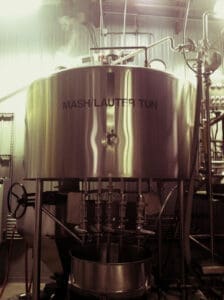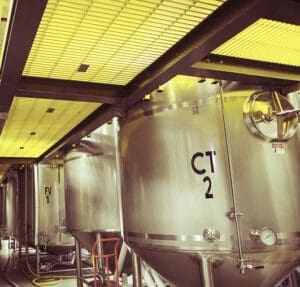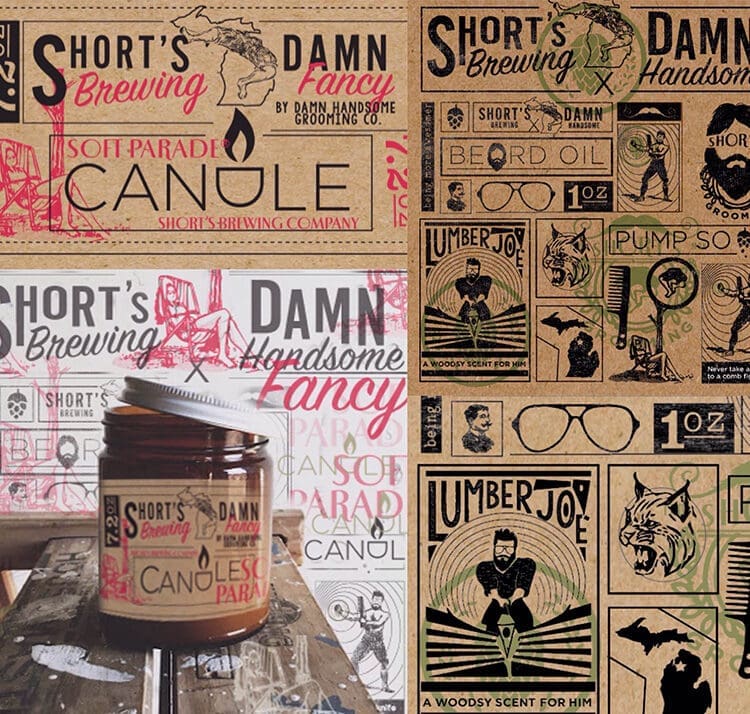 Here at Short’s, we don’t feel like we can ever get enough information about beer, and one of our favorite things to do is share that information with the beer fans that we meet throughout Michigan. We love to teach our new staff about beer using a Beer 101 course. In this blog post, we have attempted to convey some of the key parts of Beer 101 using Huma Lupa Licious, our flagship IPA, as an example. Of course it is not required, but we do recommend grabbing a Huma if you have one handy (and why wouldn’t you?).
Here at Short’s, we don’t feel like we can ever get enough information about beer, and one of our favorite things to do is share that information with the beer fans that we meet throughout Michigan. We love to teach our new staff about beer using a Beer 101 course. In this blog post, we have attempted to convey some of the key parts of Beer 101 using Huma Lupa Licious, our flagship IPA, as an example. Of course it is not required, but we do recommend grabbing a Huma if you have one handy (and why wouldn’t you?).
To start with, Short’s owner and original head brewer, Joe Short, created Huma as his vision of what the perfect IPA would be if he were allowed to make the rules. The result was a beer that is not quite a double IPA, but bigger than a standard American IPA. No matter how you’d classify it as, we think it is perfect and we love it.
If you have ever had a Huma, then you know there is a lot going on in this beer. Let’s begin with an examination of various sensations. Huma can’t be fully appreciated without taking a moment to smell its aroma and view its head, clarity, color, and carbonation. And as you take the first sip, you get a sense for the mouthfeel, blending flavors, and the way these various flavor profiles fall into balance. But what does all of this really mean? Let’s take a closer look.
Beer sensations
Head: Head is the familiar white foam fluffyness that forms when beer is poured into a glass. It is filled with carbon dioxide and held together by malt proteins. When you pour a Huma into your pint glass, there should be a creamy white head. When you swirl the beer, just slightly, the head leaves a very nice pattern on the side of your glass. We call this “lacing.” This occurs because the proteins in the ingredients link together and cling to the side of the glass.
Color: The color of the beer is due to the malt, or varieties of malt, used in the brewing process. When you hold Huma up to the light you will notice that the color resembles a sunset yellow with a golden orange tint. It is almost a honey color and is really very beautiful.
Clarity: Clarity is the ability to see through the glass, this is also called the beer’s brightness. Again, hold the beer up to the light and check out the body of the glass. Can you see through the glass? If not, this is because Huma possesses a slight haziness thanks to the malt proteins that bind to the hop polyphenols. This is due to the fact that Huma contains so much malt and so many hops.
Aroma: Aromas are the distinctive scents that come out of the beer. When you smell Huma, you may pick up on a citrus aroma, or a slight piney aroma. It will smell fresh and earthy. These aromas stem from the 5 unique hop varieties used in the brewing process. A beer’s aroma may also derive from the malt, grain, yeast strains, and fermentation by-products such as hops, fruits, nuts, etc. Huma’s aroma, however, is dominated by all of the big American hops used in the brewing process and further amplified through additional dry hopping of the beer throughout fermentation.
Taste: Tastes are the flavors on your tongue. Beer can taste sweet, sour, bitter, salty, or even umami (fatty). When sipping Huma, you will note its distinctive bitterness and fresh citrus taste. Many people describe Huma as tasting similar to grapefruit. The beer also has a slight sweetness due to the large malt bill. The interplay of bitter and sweet lends to the beer’s balance.
Mouthfeel: A beer’s mouthfeel is the physical and chemical interaction of the beer in the drinker’s mouth. Huma’s mouthfeel has a lasting bitterness due to the grapefruit taste, and it is definitely complex, but certainly not heavy. The body of the beer is another way of describing mouthfeel. Beers can be described as having a light, medium, or full body. Huma has a medium body. Full bodied beers have more residual sugars than light bodied beers.
Carbonation: Carbonation is the fizzyness that comes from the carbon dioxide gas given off by the yeast during the fermentation process. Look at the bottom of your pint glass. When you look closely, you will see the little bubbles that stream up towards the top of the glass. To taste the bitterness and flavor of the beer, Huma is purposefully not overcarbonated. In fact, various breweries have different preferences in terms of the carbonation levels of beer. Here at Short’s, we prefer carbonation to be ample but not overwhelming.
Balance: The balance of the beer is the interplay of sweetness from the malt, the bitterness from the hops, and other fermentation by-products that provide their own flavor profiles. When you swallow a sip of Huma, you may notice an initial sweetness that hits your palate and is quickly followed by a bitter finish. Huma has a good balance and it is evident because the drinker experiences both, sweetness and bitterness within the same sip. While many people do not think of the immensely hoppy Huma as possessing balance, we do actually think of it as a balanced beer due to the equally immense malt bill.
Beer characteristics
Understanding beer sensations will not only make you look like a pro the next time you enjoy a craft brew at your local bar, it will also enhance your personal enjoyment. With these sensations in mind, let’s move on to some of the major characteristics of beer: gravity, alcohol, and bitterness.
Gravity: Gravity, a shortened form of specific gravity, is the amount of dissolved malt sugars and other solids. In most brewing applications, gravity is a measure of a particular liquid’s density (wort or beer) in comparison to water. Original Gravity (O.G.) is the measure of a wort’s density compared to pure water, and Final Gravity (F.G.) is the measure of beer’s density to pure water. By comparing the two densities we can gain an idea of how much sugar was digested by the yeast into alcohol, CO2 and other metabolites. Density at Short’s Brewing Co. is measured in degrees Plato. Degrees Plato is a unit of measurement that relates density to a percentage of sucrose dissolved in water.
In practice, Huma’s O.G. is 16.5 degrees Plato (1.066 s.g.) and its F.G. is 2.0 degrees Plato (1.008 s.g.). For the layman, this probably takes you back to science class and information long since forgotten. Essentially, what this means at the start of fermentation Huma wort contains roughly 16.5% sugar and at the end of fermentation Huma beer contains roughly 2% sugar. This can be loosely calculated to measure the percentage of alcohol in the beer.
Alcohol: Measured in percent by volume (alcohol by volume or ABV), alcohol content varies from 2% to more than 25%, with most craft beer’s in the range of 4-6%. Huma is on the higher end of the craft beer ABV scale, coming in at 7.7%. The amount of alcohol content in beer is dependent on the amount of fermentable sugars available for the yeast to eat. If a beer is made with by-products that are high in sugar, such as berries or candy, the chances are that the beer will have a higher alcohol percentage because as the yeast eat sugars, they produce alcohol and carbon dioxide. Thank you, yeast!
Bitterness: Bitterness is expressed as an IBU or International Bittering Units. Hops are the main source of the beer’s bitterness. The IBU scale ranges from 6 to over 100 IBU. Huma Lupa Licious has an IBU of 96 which is at the high end of the IBU scale. This is because we use a truly massive, no scratch that, RIDICULOUS amount of 5 different kinds of hops in the brewing process for this beer. This is probably what makes Huma drinkers so loyal to this beer. There’s nothing else like it!
The brewing process
To really understand beer’s characteristics, it is important to have a sense of how a beer is brewed and what effects the various brewing stages have on the final product. So, let’s take a look at how Huma Lupa Licious goes from being a massive pile of grain, a huge pile of hops, and water, to being a complex malt and hop theme park in your mouth. All the magic begins with a mixture of grain and hot water…
 Mashing: Mashing is the process that converts the starches from the malt into fermentable sugars. The malt, and additional specialty grains, are added to hot water in a large vessel known as a mash tun. This process creates very sugary water called wort. After about an hour of steeping together, the wort is strained through the massive bed of grain in the mash tun and transported into the boiling kettle. As the wort flows out of the mash tun, it already possesses the honey color of Huma Lupa Liciuos. This first step of a Huma’s life is where it acquires its initial sweet flavors.
Mashing: Mashing is the process that converts the starches from the malt into fermentable sugars. The malt, and additional specialty grains, are added to hot water in a large vessel known as a mash tun. This process creates very sugary water called wort. After about an hour of steeping together, the wort is strained through the massive bed of grain in the mash tun and transported into the boiling kettle. As the wort flows out of the mash tun, it already possesses the honey color of Huma Lupa Liciuos. This first step of a Huma’s life is where it acquires its initial sweet flavors.
 Boiling: The second step of the brewing process is boiling. When the Huma wort is in the brew kettle it boils for about 60 minutes. Different beers have different boiling times and temperatures. This step is where Huma acquires much of its bitter flavor because hops are added to the wort. Depending on when the hops are added to the boiling pot, the hops give off different characteristics. The first hop addition gives a Huma the bitter flavor, the second its flavor similar to grapefruit pith, and the third is its citrus and piney aroma.
Boiling: The second step of the brewing process is boiling. When the Huma wort is in the brew kettle it boils for about 60 minutes. Different beers have different boiling times and temperatures. This step is where Huma acquires much of its bitter flavor because hops are added to the wort. Depending on when the hops are added to the boiling pot, the hops give off different characteristics. The first hop addition gives a Huma the bitter flavor, the second its flavor similar to grapefruit pith, and the third is its citrus and piney aroma.
 Fermenting: After the Huma wort is boiled it is transferred into a fermenting tank. This is the point where the Huma turns into beer. Yeast is introduced to the wort and the organisms convert the carbohydrates into alcohol and carbon dioxide. Huma has a higher ABV because there is a high percentage of carbohydrates due to the large grain bill. (More for the yeast to feast on!) The fermenting process is also where we dry hop. Dry hopping is when you add hops to the fermenting tank after fermentation is complete. The hops are allowed to soak in the liquid for up to a couple weeks. This process adds aromatic oils that are usually lost in the boiling process.
Fermenting: After the Huma wort is boiled it is transferred into a fermenting tank. This is the point where the Huma turns into beer. Yeast is introduced to the wort and the organisms convert the carbohydrates into alcohol and carbon dioxide. Huma has a higher ABV because there is a high percentage of carbohydrates due to the large grain bill. (More for the yeast to feast on!) The fermenting process is also where we dry hop. Dry hopping is when you add hops to the fermenting tank after fermentation is complete. The hops are allowed to soak in the liquid for up to a couple weeks. This process adds aromatic oils that are usually lost in the boiling process.
 Conditioning: The final stage Huma undergoes is conditioning. In this process the beer is naturally brightened, by allowing the leftover organic matter to settle to the bottom of the tank. At Short’s, we do this by transferring fermented Huma to a new tank where it is allowed to settle for an additional week.
Conditioning: The final stage Huma undergoes is conditioning. In this process the beer is naturally brightened, by allowing the leftover organic matter to settle to the bottom of the tank. At Short’s, we do this by transferring fermented Huma to a new tank where it is allowed to settle for an additional week.
Once Huma spends a week in the fermenting tank, and then a week in the conditioning tank, it is ready to be kegged or bottled and sent out to you. So, next time you sit down for a beer with your friends, feel free to liberate them by sharing your knowledge of beer so everyone can enjoy the outrageous deliciousness to its fullest. Cheers!
Book Recommendations: Tasting Beer



